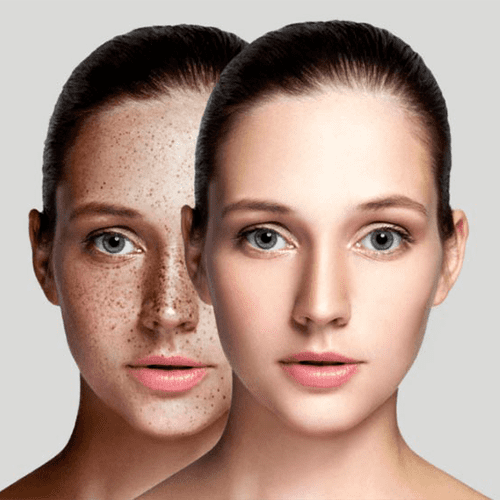Microneedling, also known as collagen induction therapy, is a minimally invasive cosmetic procedure that involves the use of a device with fine needles to create controlled micro-injuries on the skin’s surface. These micro-injuries stimulate the body’s natural wound healing processes, leading to the production of collagen and elastin, which are essential for maintaining healthy and youthful skin.
Here’s a basic overview of the microneedling process:
Preparation: Before the procedure, the skin is usually cleaned and a topical anesthetic may be applied to minimize discomfort.
Microneedling Device: Microneedling can be performed using various devices, including dermarollers or motorized pens equipped with tiny needles. The needles penetrate the skin at a controlled depth.
Micro-Injuries: As the needles penetrate the skin, they create microchannels or tiny injuries. These injuries trigger the body’s natural healing response.
Collagen and Elastin Production: The body responds to the micro-injuries by producing new collagen and elastin. These proteins are crucial for maintaining skin elasticity, firmness, and a youthful appearance.
Healing Process: The skin undergoes a healing process, and as new collagen forms, it helps improve the overall texture and tone of the skin.

Microneedling is commonly used to address various skin concerns, including:
Fine Lines and Wrinkles: Stimulates collagen production, reducing the appearance of fine lines and wrinkles.
Scars: Can improve the appearance of acne scars and other types of scars.
Stretch Marks: May help reduce the visibility of stretch marks.
Skin Texture and Tone: Improves overall skin texture and tone.
Pigmentation: Can help with hyperpigmentation issues.
It’s essential to note that microneedling should be performed by trained professionals, such as dermatologists, to ensure safety and optimal results. After the procedure, it’s common for the skin to be red and slightly swollen, but downtime is typically minimal.
As with any cosmetic procedure, individual experiences and results can vary, and it’s crucial to follow post-procedure care instructions provided by the practitioner. Additionally, it may not be suitable for everyone, so consulting with a healthcare professional before undergoing microneedling is advisable, especially for individuals with certain skin conditions or medical concerns.

ABOUT
Dr.Aiza
Dr Aiza Jamil is a one of the leading UK trained Consultant Dermatologist, laser and aesthetics. Dr Aiza Jamil did her dermatology training in Sheffield and works as Consultant Dermatologist in Manchester University Hospitals providing services to UK’s largest hospital, Manchester Royal Infirmary. She has also completed American Board Diplomate Certification in medical and cosmetic lasers from American Board of Laser Surgery making her unique in having both UK and USA qualifications.
Frequently Asked Question
Is Microneedling Recommended By Dermatologists?
Yes, dermatologists often recommend it for various skin concerns, including acne scars, fine lines, and uneven skin texture.
Is Microneedling Suitable For Your Face?
Yes, microneedling can benefit your face by stimulating collagen production, improving skin texture, and enhancing the absorption of skincare products.
Who Needs Help Getting Microneedling?
Microneedling should be avoided by individuals with active skin infections, autoimmune diseases, certain skin conditions like eczema or psoriasis, and those who are pregnant.
Why Is My Skin Darker After Microneedling?
It’s normal for your skin to appear slightly darker after microneedling due to temporary inflammation and increased blood flow to the treated areas. This usually resolves within a few days.
How Painful Is Microneedling?
Microneedling may cause mild discomfort, but it’s generally well-tolerated. To minimize any discomfort, topical numbing cream can be applied before the procedure.


